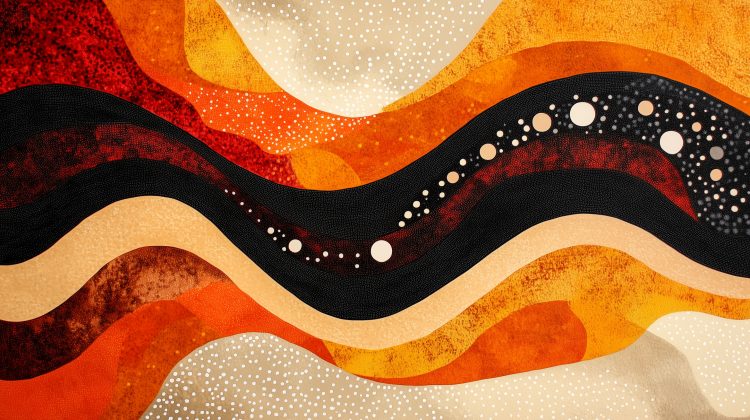Leadership at the Intersection
Partway through last year’s Theological Field Education (TFE) placement, I had a tornado dream. I have tornado dreams once every year or two, and they usually occur when change is coming.
In this dream, several large tornadoes were approaching. I frantically gathered my family down into the basement, huddling under the stairs as one tornado after another tore through the house. We knew that we were in the heart of the storm and that there was still more to come. From somewhere I couldn’t see, water had started rising and was now at chest level. I was keeping my children’s heads down and protected, and in doing so, was forcing my four-year-old’s head towards his chest, down into the water. I realized that I was pushing his face under, that he was starting to drown, but the tornadoes were here and they were coming and I needed to keep his head protected, needed to keep him safe. I felt a frantic, terrified sense of despair.
Thankfully, I woke up right then, at the very same time that my sweet son happened to have crawled into our bed. Without even opening my eyes, I reached out, placed my hands on his warm, soft, alive little body, and knew that he was safe, that all was well.
This was an awful dream. It left me feeling rattled, and it took several days to revisit its contents and wonder if it all meant something less literal.
Is this ‘dream child’ the church I imagine ministering to? Am I worried about the decisions we might make, about where we might go, about how I might lead people through this time of change? That my actions and guidance might save us from one fate—dwindling through irrelevance into oblivion—but destroy us by another, one that so dilutes who we are that we lose the distinctiveness of our faith altogether?

Leadership at the Intersection
During that year of TFE, I would sometimes wake throughout the night with a steady flow of thoughts unfolding, click click click, through my mind. Thoughts of how a certain church in town might interact more with its local neighbourhood, or how we might worship more multi-generationally and interculturally. Thoughts of how leadership and co-leadership might evolve, thoughts of the people and their needs and their stories, click click click. I have tremendous hope for how our churches might open themselves up so that the good news might be shared with more of our lonely, seeking, hurting, disillusioned, joyful neighbours, but in the same breath, I worry: what if, in opening ourselves, we lose sight of who we were in the first place?
At the start of the year, I had come across a passage in Frederick Buechner’s The Sacred Journey: A Memoir of Early Days:
…once I have put away my album for good, you may in the privacy of the heart take out the album of your own life and search it for the people and places you have loved and learned from yourself, and for those moments in the past—many of them half forgotten—through which you glimpsed, however dimly and fleetingly, the sacredness of your own journey.1
I remember that as my eyes circled back to the words “the sacredness of your own journey,” they filled with tears. How sacred these journeys are, both our own and the journeys of our communal faith. Over the months that followed, I put this perspective to work in my TFE role, meeting with over a dozen people of the church to review their sacred journeys, each time wondering together where and how they’ve encountered the divine. These conversations revealed incredible hope and vulnerability. Along the way I found a hum of belonging. Church—the stories we encounter there, the faith we cultivate, and the community through which we find it—offers a sense of belonging to something more than just the self, not simply in a social-club understanding of belonging, but much deeper, more profound, more sacred than a straightforward collegial membership might describe.
I think that God wants to see our churches persist, not because the structures themselves are holy, but because the people are.
Yet so often our very own narrative cuts through this witness. We are told, and tell each other, that the church is fading into obscurity. We look at our quietening sanctuaries and mourn how full they once were, and in many spaces, we urge ourselves towards change, looking for ways to blend more seamlessly with secular culture, hoping to appeal to the un-churched majority. It is worth asking what it does to the souls of our people and our faith communities when this is the narrative we reinforce to each other. In his DMin dissertation, Duke Divinity School student, Jeffrey Allan Seaton, wonders if the assumptions we hold around secularity and the church’s fate within it were ever accurate to begin with. In his analysis entitled “Who’s Minding the Story? The United Church of Canada Meets A Secular Age,” Seaton questions the conclusions drawn in the denomination during the radical cultural changes of the 1960s and the linearity with which we often describe secularity. He concludes that some of our core assumptions might actually be false, and urges us to adopt a posture of progressive orthodoxy, arguing that:
a necessary ingredient in our search for a United Church response to [the invitation offered in Charles Taylor’s book, A Secular Age] is a commitment to the story at the heart of our tradition: the story of the life, death, and resurrection of Jesus Christ. … We must offer, within the parameters of our particular branch of the Christian family tree, a portal to the riches of our tradition and a window open to transcendence, a view that draws us beyond the constraints of the immanent frame.2
I entered that TFE placement wanting to inspire hope in the people of the church, but instead, found hope in the words they shared and their very act of sharing.
I’ve begun to wonder if our task in ministry is, in part, a return to the collective memory of how the transcendent God meets each one of us in our journeys. In a time when so many voices reinforce the idea that something precious in our lives is collapsing, how might it feel instead for people to explore the story of God active in their lives, and lift those thoughts forward in hope for the church of the future?
I entered that TFE placement wanting to inspire hope in the people of the church, but instead, found hope in the words they shared and their very act of sharing. One of my core beliefs shaped at VST is of the divine community of the triune God. Just as our God lives within a sense of relationship and belonging, so, too, should we. People need to know that not only is it true that “we are not alone,”3 but also that they will not be alone in their faith, that the body of Christ will continue to meet them in their future. I think that God wants to see our churches persist, not because the structures themselves are holy, but because the people are. There’s value in leaning more faithfully into this promise in our future ministry, representing what it looks like to trust in the church of tomorrow, inviting those around us to keep building that church even as they let go of some of what church looked and felt like yesterday.
James K. A. Smith references Antoine de Saint-Exupéry, writing: “If you want to build a ship, don’t drum up people to collect wood and don’t assign them tasks and work, but rather teach them to long for the endless immensity of the sea.”4 What might it look like, leading at the intersection, to hold people’s gaze to the future to which God calls this church, to orient their vision from a foundation of the sacredness of their own journey, out to a promised reality beyond our present circumstances? What might it look like to teach people to long for the endless immensity of the sea?
1. Frederick Buechner, The Sacred Journey: A Memoir of Early Days (New York: HarperOne, 1982): 7.
2. Jeffrey Allan Seaton, “Who’s Minding the Story? The United Church of Canada Meets A Secular Age,” Duke University Libraries, October 24, 2016, https://dukespace.lib.duke.edu/dspace/handle/10161/13619, 195–196.
3. See the United Church faith statement, A New Creed.
4. James K. A. Smith, You Are What You Love: The Spiritual Power of Habit (Grand Rapids, MI: Brazos Press, 2016): 91.
Kate Keilty is in her final year of the Master of Divinity program at Vancouver School of Theology. Originally from Ontario, she and her family have recently relocated to Vancouver Island where she is thrilled to be entering into her first ministry role this spring. When not engaged in studies, Kate enjoys cooking and baking, hiking and completing medium-difficulty crossword puzzles, and striking out on Great Big Family Adventures.
